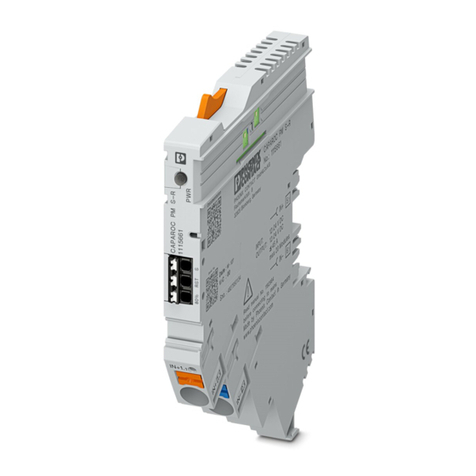
Table of contents
108147_en_00 PHOENIX CONTACT 3 / 44
Table of contents
1 For your safety ...........................................................................................................................5
1.1 Labeling of warning notes......................................................................................5
1.2 Qualification of users .............................................................................................5
2 About this document ..................................................................................................................7
2.1 Aim of this document .............................................................................................7
2.2 Hardware requirements .........................................................................................7
3 Description of the CBMC E4 24DC/1-4A+ IOL and CBMC E4 24DC/1-10A IOL ........................9
3.1 General description of the device circuit breaker ...................................................9
3.2 Possible fields of application of the device circuit breaker ...................................10
3.3 Connection and operating elements ....................................................................11
3.3.1 Channel LED button .............................................................................11
3.3.2 Diagnostics and status indicators .........................................................12
3.4 Operating modes.................................................................................................13
3.4.1 Independent operation .........................................................................13
3.4.2 IO-Link operation .................................................................................13
4 Mounting and power supply .....................................................................................................15
4.1 Mounting the device circuit breaker .....................................................................15
4.2 Power supply connection ....................................................................................16
4.3 Connecting the IO-Link connection......................................................................16
4.4 IODD file ..............................................................................................................16
5 Process data and status information ........................................................................................17
5.1 Cyclic process data .............................................................................................17
5.2 Acyclic data .........................................................................................................20
5.2.1 IO-Link specific parameters .................................................................22
5.2.2 Device-specific parameters ..................................................................23
5.3 Events..................................................................................................................28
5.4 Device access locks ............................................................................................29
5.5 Data storage (IO-Link data storage).....................................................................29
A Technical appendix...................................................................................................................31
A 1 Technical data .....................................................................................................31
A 2 Ordering data.......................................................................................................35




























